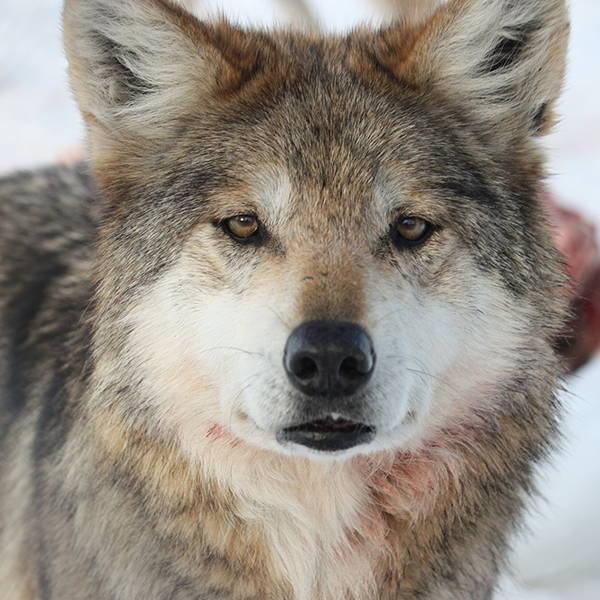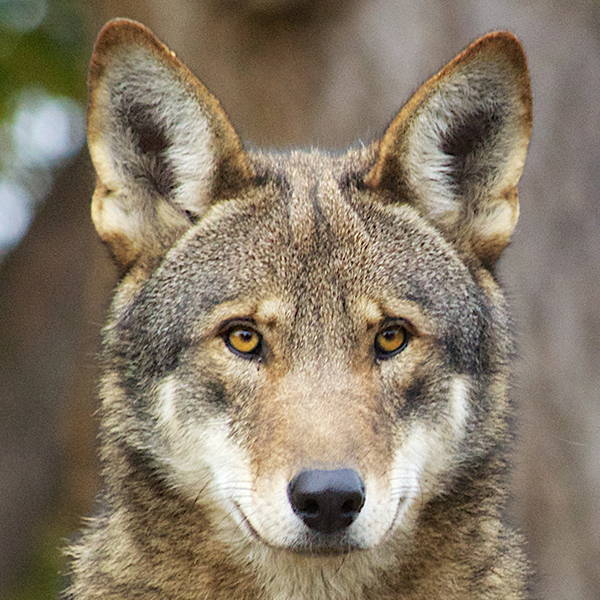The Mexican gray wolf is a subspecies of the gray wolf, commonly referred to as “el lobo”.
Though they once numbered in the thousands, these wolves were wiped out in the U.S. by the mid-1970s, with just a handful existing in zoos. In 1998, the U.S. Fish and Wildlife Service, led by Jamie Rappaport Clark (now president of Defenders of Wildlife), released 11 Mexican gray wolves back into the wild in Arizona.
Although their numbers have grown slowly, they remain the most endangered subspecies of wolf in the world because of compromised genetics, human intolerance and reluctance to release more individuals and bonded pairs to the wild.

Defenders' Impact
As the population slowly recovers, Defenders continues to support scientists and policymakers to find the best path forward, including supporting adult releases and cross-fostering of pups. We also sponsored a Mexican biologist to come to the U.S. to gain experience working with the recovery team to support wolves in Mexico.
Defenders supports range rider projects on the ground in high conflict areas to reduce conflict and foster coexistence. Defenders also supports a collaborative wildlife technician program which places trained graduate students in the field for six months at a time to assist with monitoring of wolves and livestock and to implement proven non-lethal tools to reduce conflicts.
The red wolf is a smaller, thinner cousin of the gray wolf.
It has a distinctive reddish cast for which it is named. The red wolf is the world's most endangered canid, and the Southeast’s native wolf. Uniquely "All-American," the red wolf's entire historical range is confined within what is now the United States.
Once roaming as far west as Texas, down into Florida, and up into the Midwest, the red wolf now persists in only a fraction of its range. It has lost more of its historical territory—99.7 percent—than any other large carnivore, including lions, tigers and snow leopards. The red wolf has faced an embattled road to recovery since its listing in the first class of the Endangered Species Act.
At one point, the population grew to over 150 animals, before falling victim to political pressure, illegal management and agency inaction.

Defenders' Impact
Defenders has been working on red wolf recovery since the mid-1980s through a combination of advocacy and public education.
In 2016, Defenders brought on two full-time field conservation staff to lead a grassroots outreach effort in North Carolina to increase awareness of the critical situation for wild red wolves in Eastern North Carolina. We have engaged in lawsuits to force FWS and NCWRC to protect this critically endangered species.
In the spring of 2017, FWS announced plans to review and update the 10(j) rule that regulates management of the wild “nonessential experimental population” of red wolves in North Carolina. Defenders helped mobilize nearly 55,000 of our members and the public to speak up in support of the red wolf recovery program.
